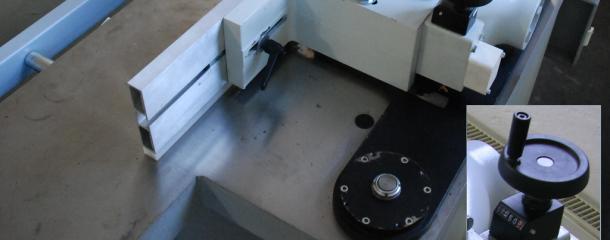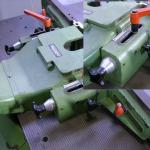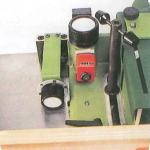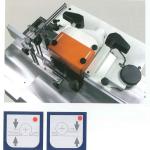Jemné doladění dorazu
Záznam uvidíte za
       The fine adjustment of the router fence jaws can be carried out manually or electronically. It is generally the case that the fence jaws are connected with the milling stop unit by means of threaded shafts. Rotating the threaded shafts facilitates moving these backwards and forwards. Driving the shafts and metering the adjustment distance can take place manually or electronically. Manual fine adjustment mechanismsFine adjustment screwThe threaded shaft goes through the milling stop unit and ends in a knob or a grippy metal cylinder. It is possible to fix the fine adjustment with a release handle. The dimension can be read off in whole millimetres on a scale at the transition between the suction hood and fence jaws, the tenths scale is located directly at the fine adjustment screw. Digital counterThe threaded shaft is powered by a small crank, which is connected with a mechanical digital counter. The digital counter accurately indicates the dimension setting down to a tenth. Revolver-type stopStop screws sit on a revolving disc, with which the requisite milling depths can be pre-set. By turning the disc with a handle it is possible to set the desired dimension rapidly. Revolver-type stops are usually additionally equipped with a fine adjustment screw or digital counter. These devices are particularly well suited for use when the same dimensions are required repeatedly. Electrical adjustmentThe threaded shafts are each powered by their own respective electrical actuator with rotary pulse encoder. The dimension of the milling depth is transferred from the control to the actuators. |
CNC obrábění894
Opracování hran629
Pílení439
Hoblování188
Frézování181
Vrtání, Dlabání135
Lisování, Spájení202
Broušení320
Dopravníky, Skladování, Balení200
Povrchová úprava152
Výrobní linky127
Topení, Sušení, Drcení62
Odsávání, Stlačený vzduch, Vakuum134
Technika montáže, pracovní stoly15
Soustružení29
Nástroje, Ostřeší91
Ostatní, Příslušenství131




